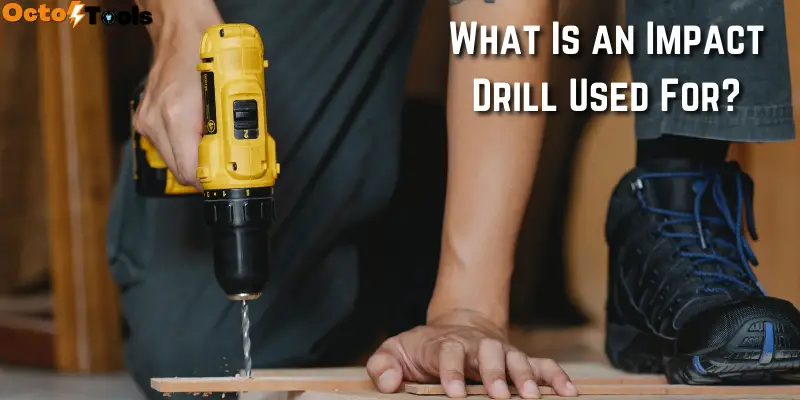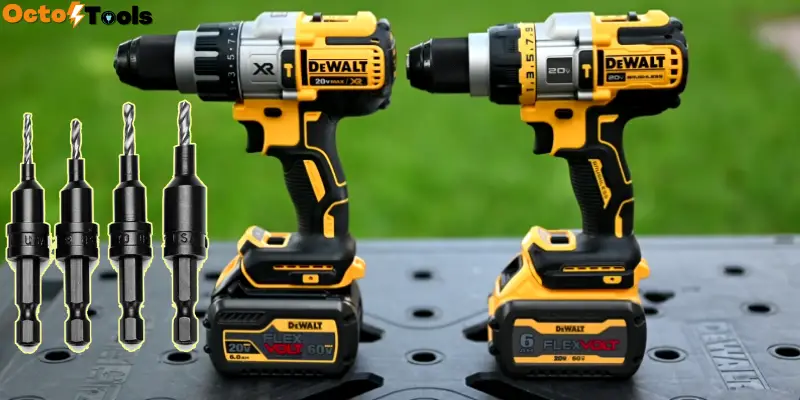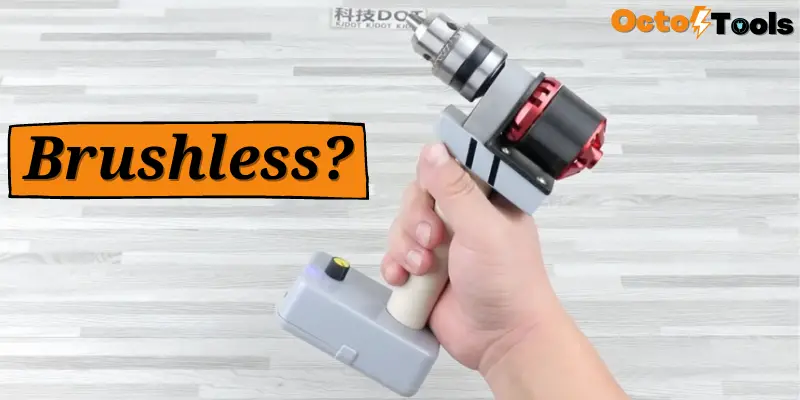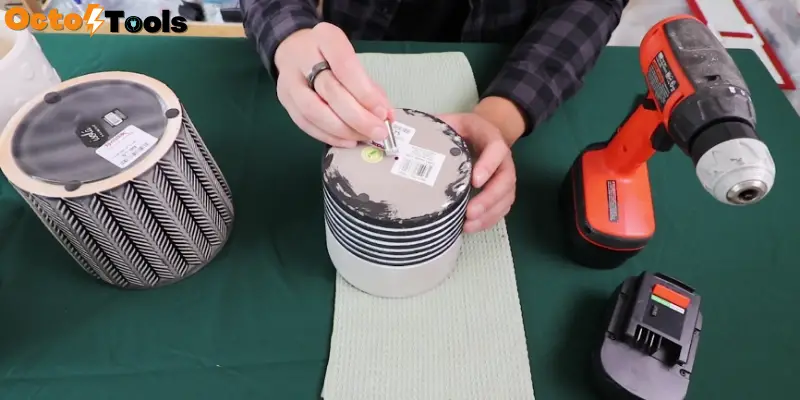Drilling is a crucial part of repairing and building jobs that’s why professionals always emphasize using the right drill bit for each drilling task.
For instance, basic drilling tasks require a drill bit that can create holes. But when your work requires multiple drilling on various materials you need a specially designed bit like a step drill bit.
Why?
Let’s find out the answer in today’s article where I will be explaining what is a step drill bit used for and how it makes the task much smoother than other drill bits.
What Is A Step Drill Bit?
It is a special kind of drill bit that varies in diameter from its tip to the base and resembles a cone or miniature pine tree. It has the tip ground down to different diameters which allows you to drill different sized holes. Step drill bits are also available with steel, high-speed steel, cobalt, or carbide coating tip so that you can use them based on your need.
Two types of step drill bits are available; counter-bore and countersink.
The counter-bore step drill bit is structured as a straight slide between the ground diameter and its original diameter. On the other hand, the countersink is structured as angled but both diameters have the same flute characteristics that keep the bit from clogging down while drilling the softer materials.
What Is A Step Drill Bit Used For?
Typically a step drill bit is used for drilling holes or enlarging an existing hole in any soft materials such as thin sheet metal, plastic, or aluminum and hard materials such as bronze, cast iron, or steel.
Step drill bits, drill through any metal sheet up to ¼ inch thick by rotating clockwise and it is also known as self start drill bit because most step bits do not require any pre-holes or pilot holes.
A step drill bit can be considered as one step drilling tool because a step bit has the ability of chamfering and deburring the cutting edge of any workpiece by using a bevel that creates smooth cleaned holes.
Let’s see in which purposes you can use a step drill bit instead of other normal drill bits for an effortless working experience-
- Typically a step drill bit is used for drilling holes and enlarging existing holes.
- It is more useful in those drilling tasks where you need multiple holing and using fasteners too.
- You can use a step drill bit to drill in any soft materials such as thin sheet metal, plastic, or aluminum and hard materials such as bronze, cast iron, or steel.
- Step drills are also ideal for all current steel sheets up to a thickness of 4.0 mm where you can easily tap, drill and deburr in one step with that.
- A step drill can be used in industries such as electrical, automotive, mechanical engineering, aviation sanitary engineering, and heating technics.
How To Use A Step Drill Bit?
No matter how useful and effective the step drill bits are for drilling jobs, they still can not deliver the best results if you are not using them appropriately. That’s why to get the best results from your drill bit just read the instructions given below and follow each step.
Step-1: Ensure Wearing Protection
Remember, ensuring safety is always the priority in any line of work. Therefore, before you start the whole drilling task secure your face, eye area, and hands with goggles and gloves to protect from any shavings or splinters that may fly during drilling on a particular surface.
Also, ensure that you are plugging the electric outlet with a secured connection beforehand so that you do not experience any loose wire or unstable connection issues during the drilling work.
Step-2: Determine Your Drilling Surface And Place The Step Drill Bit
First of all, you need to determine the surface on which you are planning to drill holes with the step drill bit because you will be needing different step drill bits for each type. Step drill bits are available for each specific material such as metal, wood, stainless steel, or aluminum.
After you have successfully determined the surface and the bit you are going to use, place the tip of the center punch in the exact spot of drilling the hole. Now, find the precise spot, and hit the blunt end of its center punch with a hammer to get a clear entrance for the drill bit.
Step-3: Secure Your Step Drill Bit In Place And Run
Next, you should secure the small step bit into your drill machine chuck. Generously apply the tapping and cutting fluid to the center mark. After ensuring that your drill bit is aligned with the center mark now press down the trigger on the drill machine.
Remember to run the small drill bit through the metal sheet or wooden sheet if your workpiece is one of them. When you are done with that, replace the small step bit with the larger bit and proceed to align the large drill bit the same way as before.
Step-4: Ensure Regular Intervals In Between Drilling
Another important thing you should keep in mind that putting constant pressure while you are drilling is no ideal way of doing it and it may cause harm to the machine or the surface that’s why you should take regular intervals in between drilling.
These in-between intervals will also help you to keep the motor cool which will eventually save your machine from any further damage. Holes need some additional cutting and finishing to reach the precise cut so when the hole reaches that diameter you should instantly stop drilling.
Step-5: After Finishing Remove And Clean them
After finishing the drilling task remove the large drill bit from your drilling motor and start cleaning them one by one used bits, the main drill motor, even the newly created holes.
When you are drilling on any metal, make sure you polish the bit properly after cleaning, and if you have a bit container put it in that
Benefits Of Using A Step Drill Bit
In case you are still not convinced or wondering whether to choose a step drill bit over other normal bits, let me help you by highlighting the benefits.
- A step drill bit is practically the ideal choice for people who wants to use a single drill bit for creating different sizes of holes in various types of surfaces.
- Another specialty of using a step drill bit is its sharp cutting edges, which can create smooth-walled and straight hole sides.
- With step drill, there is no need of attaching, detaching, or reattaching the bits during drilling as it is manufactured as variable sizes in one tool.
- Step drill bits are ideal for sheet metal drilling task
Disadvantages Of Step Bits
Though a step drill bit can be your ideal choice but before you make your final decision just have a look at the disadvantages you may experience if you purchase it and use it.
- Professional sharpening or resharpening is required which means you can not do it by yourself at home unless you are a professional.
- Though in most cases you do not require pilot holing in some cases you will need pilot holes beforehand.
- Step drill bits are mainly custom-made bits designed for specific purposes which relatably expensive than the normal drill bits we find on the market. It is more like high-end equipment which may not be convenient for all of us.
Can You Use A Step Drill Bit On Wood?
Step drill bits are primarily designed for thin or sheet metal, up to 1/4 inch thick but you can also use them on wood surfaces as well as other materials like plastic or aluminum but if you are planning on using them on wood then make sure you are using on wood that is up to maximum 4 mm.
Conclusion
Today’s article was aimed to give a brief idea of what is a step drill bit used for so that you can understand why and how a step drill bit can be an ideal choice.




